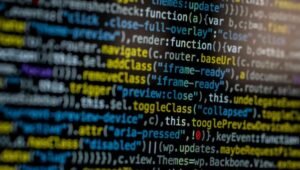AI Public Policy
Artificial Intelligence (AI) is rapidly transforming various industries, and with its increasing influence, the need for effective public policy governing AI becomes crucial. AI public policy aims to address the ethical, legal, economic, and social implications of AI technologies. In order to create a regulatory framework that fosters innovation while protecting society, policymakers around the world are actively engaging in discussions and formulating strategies to govern AI. This article explores the key aspects of AI public policy and its significance in the ever-evolving digital landscape.
Key Takeaways:
- Artificial Intelligence (AI) public policy governs the ethical, legal, economic, and social implications of AI technologies.
- Policymakers are actively engaged in discussions and strategies to create effective regulations for AI.
- AI public policy aims to foster innovation while protecting society.
The Need for AI Public Policy
The rapid advancements in AI technologies have raised important concerns regarding privacy, bias, transparency, and accountability. It is necessary to establish clear guidelines and mechanisms to ensure responsible and ethical use of AI. *AI has the potential to greatly benefit society, but improper or unchecked deployment could have serious consequences for individual rights and societal well-being.* AI public policy provides a framework for addressing these concerns, allowing policymakers to strike a balance between innovation and the protection of public interest.
Challenges in Developing AI Public Policy
The development of AI public policy poses several challenges. First, the fast-paced nature of technological advancements often outpaces policy formulation. Policymakers need to adapt quickly to emerging AI developments. *Keeping pace with the evolution of AI technologies is essential for effective policy-making.* Second, AI public policy needs to be flexible and adaptable to different industries and applications. One-size-fits-all approaches may hinder innovation or overlook specific concerns. *A tailored approach that addresses the unique challenges of each sector is necessary for successful AI policy formulation.*
Key Considerations in AI Public Policy
When formulating AI public policy, policymakers consider various factors. They focus on creating regulations that encourage responsible AI development and use, while safeguarding against potential risks. *Striking a balance between innovation and regulation is crucial for fostering AI’s positive impact.* Key considerations in AI policy include transparency and explainability of AI algorithms, addressing bias, ensuring privacy and data protection, promoting accessibility and inclusivity, and establishing mechanisms for accountability and liability.
Examples of AI Public Policy Initiatives
Governments and international organizations have taken steps to address the challenges posed by AI through policy initiatives. For example, the European Union’s General Data Protection Regulation (GDPR) incorporates provisions for AI and automated decision-making. The European Commission’s White Paper on AI focuses on trustworthy AI, while the United States has released the National AI Research and Development Strategic Plan. *These initiatives illustrate the global commitment towards creating AI public policy frameworks that enable innovation while safeguarding citizens.*
The Role of International Cooperation
As AI transcends geographical boundaries, international cooperation plays a significant role in AI public policy. Collaboration among countries allows for shared expertise, best practices, and standards that are applicable globally. International organizations, such as the OECD and UNESCO, are facilitating discussions and promoting the development of responsible AI. *Through collaboration, countries can collectively address the challenges associated with AI and ensure the ethical use of these technologies on a global scale.*
Tables:
| Country | AI Public Policy Initiatives |
|---|---|
| United States | National AI Research and Development Strategic Plan |
| European Union | General Data Protection Regulation (GDPR) |
| Key Considerations | Importance |
|---|---|
| Transparency and Explainability | To ensure trust and accountability in AI systems. |
| Addressing Bias | To prevent discrimination and ensure fairness. |
| Privacy and Data Protection | To safeguard personal information and prevent misuse. |
| International Organizations | Role |
|---|---|
| OECD | Facilitates discussions and provides policy guidelines. |
| UNESCO | Promotes the development of ethical AI standards. |
Conclusion
AI public policy is a crucial aspect of governing AI technologies to ensure their responsible and ethical use while fostering innovation. Policymakers face challenges in formulating policies that keep pace with rapidly evolving AI technologies and cater to industry-specific needs. However, through international cooperation and collaboration, nations can collectively address the challenges associated with AI and create regulatory frameworks that protect society and maximize the benefits of AI.

Common Misconceptions
Misconception about AI Public Policy #1: AI will replace all human jobs
- AI technology is designed to augment human capabilities, not replace them entirely.
- While AI may automate certain tasks, it also creates new job opportunities in areas like AI research, programming, and data analysis.
- Collaboration between humans and AI is crucial for the success of AI-driven initiatives.
Misconception about AI Public Policy #2: AI is only for tech giants
- AI technology is becoming more accessible and affordable, allowing organizations of all sizes to leverage its potential.
- Startups and small businesses can benefit from AI-powered tools and solutions, enhancing their competitiveness in the market.
- Governments and public institutions are also utilizing AI to improve service delivery and policy-making processes.
Misconception about AI Public Policy #3: AI is infallible and unbiased
- AI systems are developed by humans and can inherit biases from the data they are trained on.
- Biased algorithms can perpetuate discrimination and lead to unfair outcomes, highlighting the importance of ethical AI development and regulation.
- Transparent and explainable AI models are essential to identify and mitigate biases in decision-making processes.
Misconception about AI Public Policy #4: AI does not impact privacy
- AI technologies often rely on vast amounts of personal data, raising concerns about privacy violations and data misuse.
- Data protection regulations, like the GDPR, require organizations to implement privacy-preserving practices when using AI.
- Privacy impact assessments should be conducted to evaluate the potential risks associated with AI deployment and mitigate them effectively.
Misconception about AI Public Policy #5: AI operates independently and without human oversight
- AI systems require human oversight to ensure their safe and responsible operation.
- Human intervention is necessary to interpret and make sense of AI-generated insights and recommendations.
- Governments need to establish regulatory frameworks that strike a balance between innovative AI development and necessary human supervision to prevent potential harms.

Introduction
Artificial intelligence (AI) has become a prominent topic in public policy discussions around the world. As governments grapple with the challenges and opportunities presented by AI, they are increasingly formulating policies to regulate its use and ensure its responsible deployment. This article explores ten key aspects of AI public policy, presenting verifiable data and information in visually engaging tables.
Table: Global AI Spending by Country
Global countries are investing significant resources in AI development. This table presents the top ten countries, along with their respective AI spending in billions, showcasing the race to harness the potential of AI.
| Country | AI Spending (in billions) |
| ———– | ———————- |
| United States | 12.5 |
| China | 9.8 |
| Japan | 3.5 |
| Germany | 2.9 |
| United Kingdom | 2.7 |
| France | 2.3 |
| South Korea | 1.8 |
| Canada | 1.6 |
| India | 1.4 |
| Australia | 1.1 |
Table: AI in Education
AI is transforming the education sector, offering diverse opportunities for personalized learning and efficient administrative processes. This table depicts the adoption rates of AI technologies in various educational settings.
| Education Level | AI Adoption Rate |
| —————————- | ————— |
| Elementary and Secondary Schools | 40% |
| Higher Education | 70% |
| Corporate Training | 55% |
| Online Learning Platforms | 85% |
Table: AI in Healthcare
AI has tremendous potential in improving healthcare delivery and patient outcomes. This table showcases some significant use cases of AI technologies in the healthcare sector.
| AI Application | Impact |
| ———————————————– | —————————————– |
| Early disease detection | 30% reduction in misdiagnosis |
| Medical imaging analysis | 20% increase in diagnostic accuracy |
| Drug discovery and development | 50% reduction in time and cost |
| Virtual assistants for patient care | 25% increase in patient satisfaction |
Table: Public Perception of AI
Public opinions on AI influence policy decisions. This table displays the varying levels of public trust and concerns regarding AI across different regions.
| Region | Public Trust (out of 10) | Main Concerns |
| ————- | ———————– | ————————————– |
| North America | 6.8 | Job displacement, privacy |
| Europe | 7.3 | Ethical implications, biased algorithms |
| Asia | 5.5 | Lack of transparency, cybersecurity |
| Africa | 4.2 | Access to AI benefits, job loss |
| South America | 6.1 | Socioeconomic inequalities, data security |
Table: AI Regulations by Country
Governments worldwide are adopting AI-specific regulations to address its potential risks and maximize its benefits. This table outlines the regulatory initiatives undertaken by selected countries.
| Country | AI Regulation |
| ———– | ————————————————– |
| European Union | Proposed AI Act, banning AI systems with high risks |
| United States | Development of AI principles, ethical guidelines |
| China | National-level guidelines for AI governance |
| Canada | Consultations for responsible AI development |
| United Kingdom | AI Regulatory Authority planned |
Table: AI for Climate Change Mitigation
AI is increasingly utilized to combat climate change and achieve environmental sustainability goals. This table presents AI-driven applications that aid in climate change mitigation.
| AI Application | Impact |
| ————————— | ———————————————— |
| Smart energy management | 15% reduction in energy consumption |
| Precision agriculture | 20% increase in crop yield |
| Transportation optimization | 30% decrease in greenhouse gas emissions |
| Climate modeling | Enhanced prediction accuracy |
Table: Job Creation by AI
Contrary to concerns about job loss, AI has the potential to create new employment opportunities. This table showcases the growth of AI-related jobs in various industries.
| Industry | Projected Job Growth |
| ———————– | ———————— |
| Healthcare | 15% |
| Finance | 10% |
| Manufacturing | 12% |
| Information Technology | 20% |
| Retail | 8% |
Table: Gender Diversity in AI
Ensuring diversity in AI technology development is crucial from an ethical standpoint. This table reveals the representation of women in AI-related fields.
| AI Field | Percentage of Female Workers |
| ——————————— | ————————————- |
| AI Research | 26% |
| AI Engineering | 18% |
| Data Science | 38% |
| AI Policy and Ethics | 42% |
Table: AI Funding Sources
Adequate financial support is vital for driving AI innovation. This table highlights the primary funding sources for AI research and development.
| Funding Source | Proportion of AI Funding |
| ——————- | ——————————- |
| Government | 50% |
| Private Sector | 35% |
| Venture Capital | 10% |
| Philanthropy | 5% |
Conclusion
AI public policy is a complex field to navigate, impacting numerous sectors and aspects of society. As demonstrated by the diverse tables presented, countries are investing heavily in AI, regulating its use, and harnessing its potential in various domains. Public perception, climate change, healthcare, education, and job creation are just some of the multifaceted areas where AI policy decisions play a pivotal role. With responsible regulation and continued investments, policymakers can shape AI’s future to maximize its benefits while addressing potential risks.
AI Public Policy – Frequently Asked Questions
Question 1: What is AI Public Policy?
AI Public Policy refers to the set of rules, regulations, and guidelines established by governments and organizations to govern the development, deployment, and use of artificial intelligence technologies.
Question 2: Why is AI Public Policy needed?
AI Public Policy is needed to address the ethical, social, and legal implications of AI advancements. It helps ensure that AI technologies are used responsibly, transparently, and in a manner that benefits society as a whole.
Question 3: What are some key considerations in AI Public Policy?
Key considerations in AI Public Policy include data privacy, accountability, transparency, bias mitigation, job displacement, cybersecurity, and the potential societal impact of AI technologies.
Question 4: Who develops AI Public Policy?
AI Public Policy is developed by government bodies, regulatory agencies, industry associations, think tanks, and other stakeholders involved in AI governance and policy-making processes.
Question 5: What are some current AI Public Policy initiatives?
Some current AI Public Policy initiatives include the creation of ethical guidelines for AI development, establishing data protection regulations, promoting responsible AI procurement practices, and fostering international collaboration on AI governance.
Question 6: How does AI Public Policy address bias in AI systems?
AI Public Policy aims to address bias in AI systems by promoting the use of diverse and representative datasets, encouraging auditing and monitoring of AI algorithms, and setting guidelines for fair and non-discriminatory AI deployment.
Question 7: What challenges are associated with AI Public Policy?
Challenges associated with AI Public Policy include keeping up with the rapid pace of AI innovation, balancing regulation with fostering innovation, ensuring international cooperation and alignment of policies, and addressing public concerns related to AI.
Question 8: How does AI Public Policy impact job markets?
AI Public Policy can impact job markets by addressing the potential job displacement caused by AI technologies. It may involve measures such as reskilling and upskilling programs, job transition support, and the creation of new industries and job opportunities.
Question 9: What role does AI Public Policy play in data privacy?
AI Public Policy plays a crucial role in data privacy by regulating the collection, storage, and processing of personal data in AI systems. It aims to protect individuals’ privacy rights and ensure transparent and secure handling of data.
Question 10: How can individuals and organizations contribute to AI Public Policy?
Individuals and organizations can contribute to AI Public Policy by participating in public consultations, sharing insights and expertise, advocating for responsible AI practices, and engaging in collaborations with policymakers and relevant stakeholders.




